This post is a continuation of the 01 May post on magnetism where we estimated that it is totally impossible that actual spinning of the electron would cause it’s magnetic properties. In the 01 May post I told you I had never seen how in physics they think electrons get accelerated in an inhomogeneous (and constant in time) magnetic fields. But when I finally tried to do some internet searching it was terrible easy to find. The offcial view is that they have an expression for the potential energy and the force is simply the gradient of the potential energy. But in order to explain the splitting in a beam in two in the Stern-Gerlach experiment something very strange has to happen: half of the electrons go into a somewhat lower energy and the other half in a somewhat higher state.
By all standards this is strange. Compare it for example to the next: You are standing on top of a building or a mountain and you start throwing rocks. Half of those rocks start falling to the ground as as such they are lowering their potential energy. The other half start flying up and as such gain potential energy like they feel anti-gravity. By all standards this is strange…
In my version of electrons where they are not magnetic dipoles but carry magnetic charge, you do not have this strange energy behavior because all electrons simply will follow their magnetic charge and as such all will go to lower energy levels.
And if the official version was true, that is half of the unpaired electrons turn into a lower energy and the other half in a higher energy spin state, that instantly brings problems when it comes to explaining permanent magnet behavior. If I grab a permanent magnet and stick it to a piece of iron, if half of the unpaired electrons would have spin up and the other half spin down, the magnet would never stick… Basically the official version of explaining the SG experiment is that you get those separation in unpaired electron spin states while when you stick a permanent magnet to a piece of iron all unpaired electrons will align to the magnetic field of the permanent magnet… That is highly contradictionary!
When just over five years back I found out the results of the SG experiment for the first time, my understanding of using an inhomogeneous magnetic field has always been that the electron feels tiny different forces with it’s north and south pole by the applied extermal magnetic field. And because the electron is so tiny, how could one unpaired electron pull an entire silver atom in two different directions?
Anyway this post is 8 pictures long, I had to made two of the a larger the rest is of the usual 550×775 pixel size.
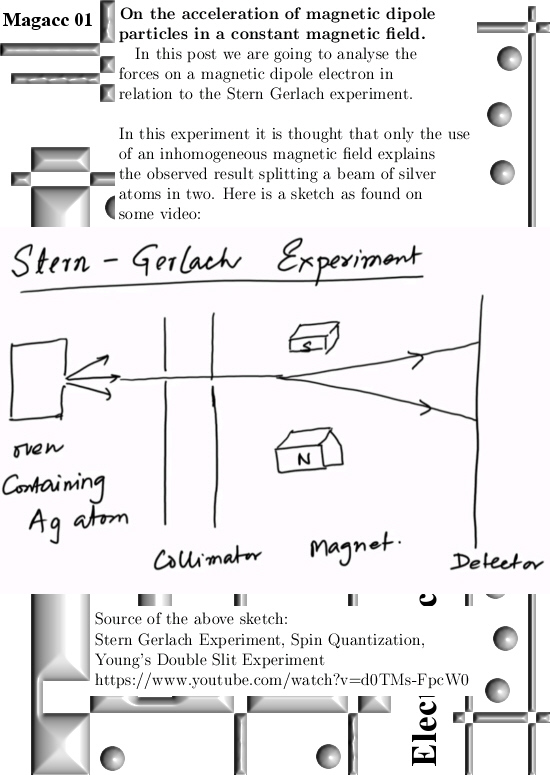
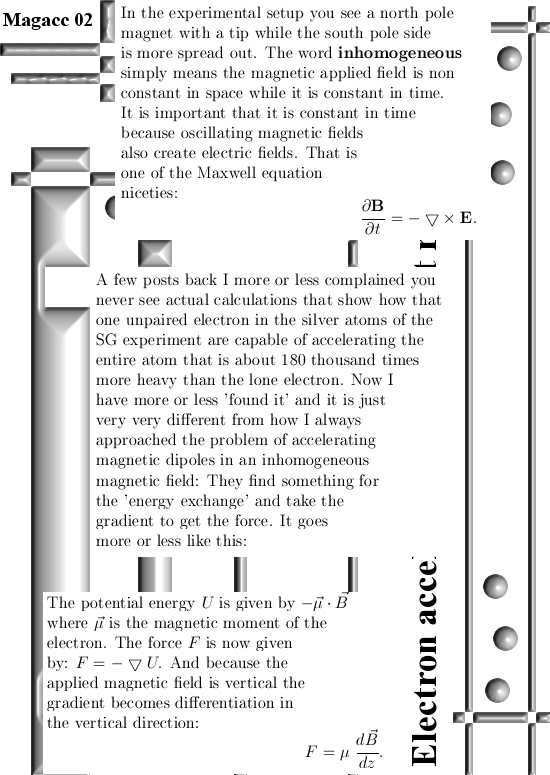
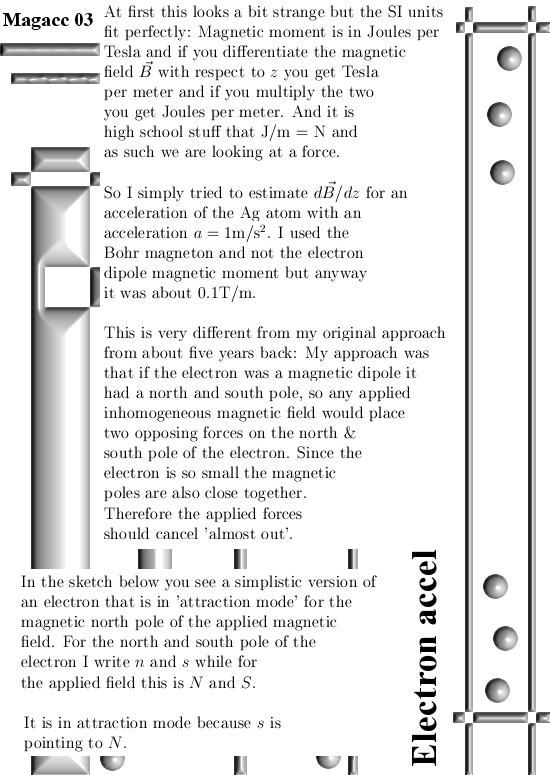
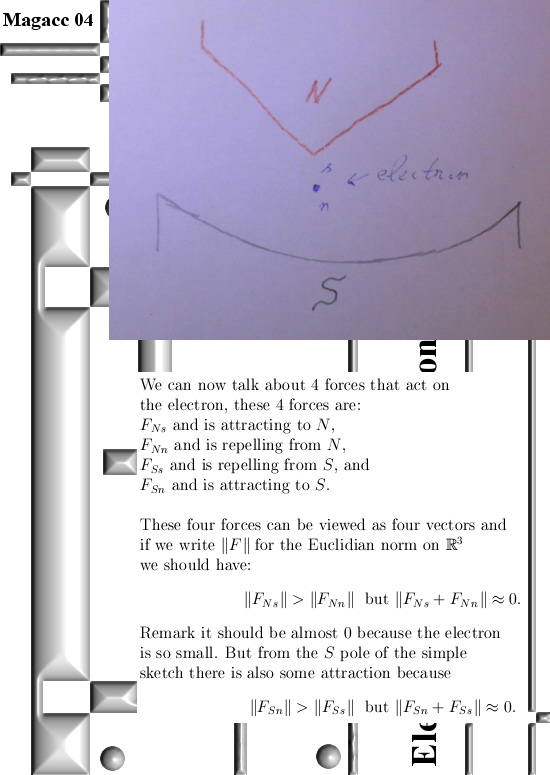
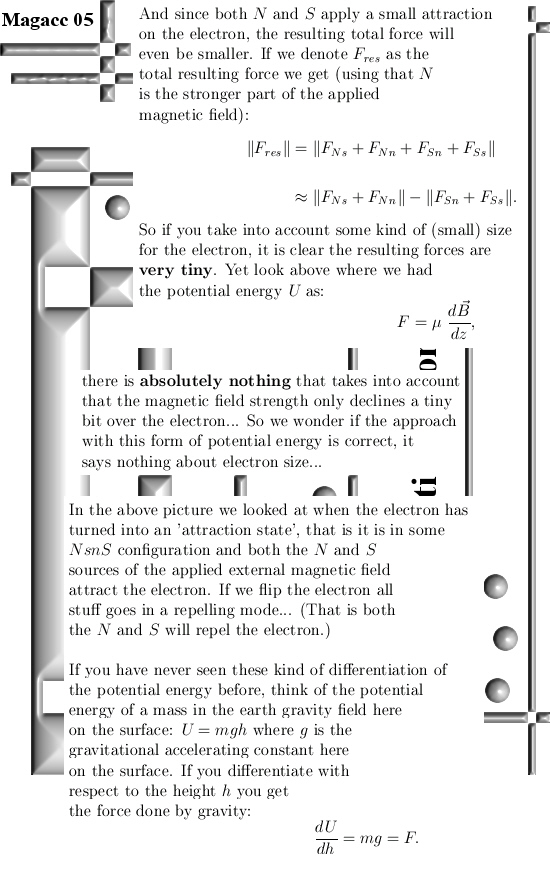

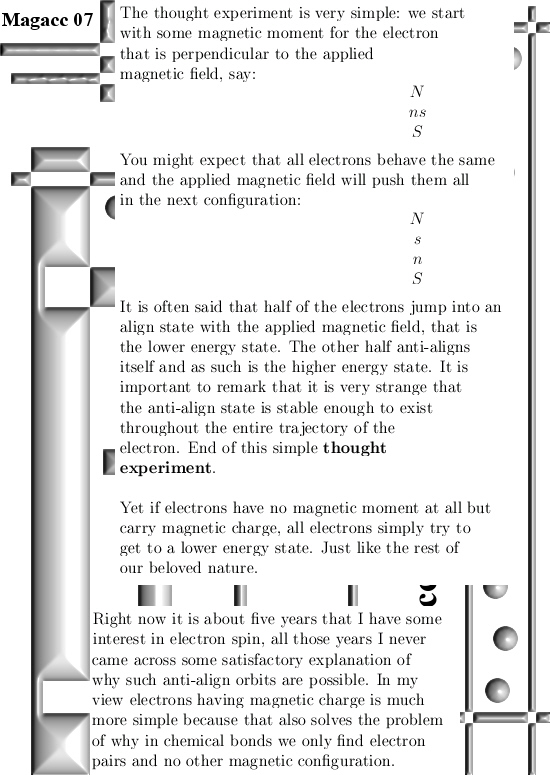
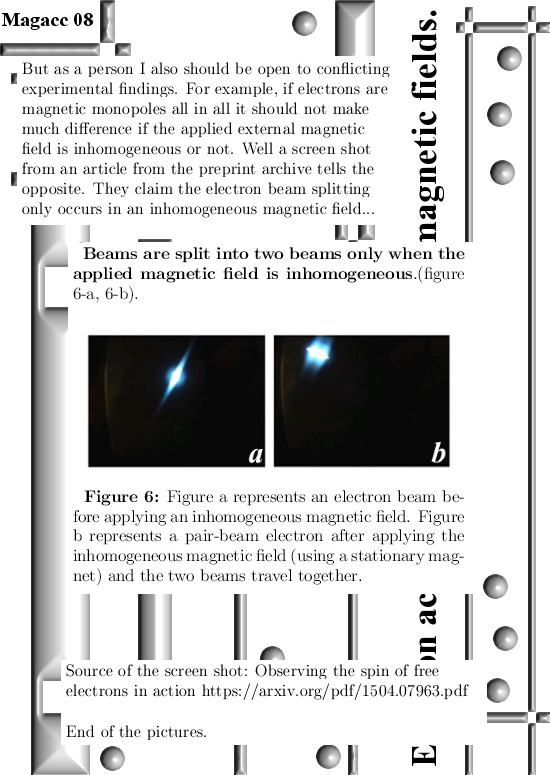
Oh oh am I now shaking in fear because of the above photo as found on the preprint archive? If true, that would smash my idea of electrons carrying magnetic charge because if they carry magnetic charge it would not make much of a difference if the applied external magnetic field is inhomogeneous or not. A constant magnetic field simply would do.
Ok, for the time being is this the end of this post.